Performance reviews are often a dreaded mark on HR’s calendar. Employees often feel demotivated by traditional appraisals. Constructive feedback feels notably absent.
This is probably because giving genuinely constructive feedback is tough. Many managers and leaders would rather avoid hard truths altogether than give honest, evidence-based reviews. Others give out negative feedback carelessly – without thinking how it might impact on employee motivation.
On top of this, performance reviews are often designed in less-than-constructive ways. A simplistic rating on performance does not give a clear picture of how we can improve. An annual performance review may assess employees based on work they completed 6 months ago.
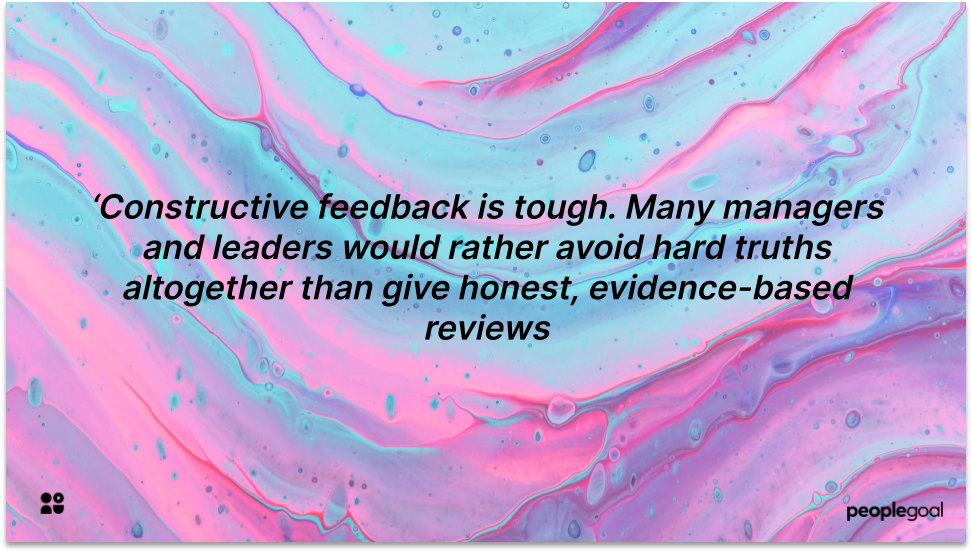
This leads to a reviews process that does more harm than good. Either employees are unaware of how to improve, or they are so conscious of their faults that they lose motivation altogether.
Luckily, it doesn’t have to be this way. It is possible to create a reviews process that is truly productive. Comments in appraisals should be evidenced with events and behaviors, not personality traits. Managers should follow up with employees on criticism, and help provide solutions to any problem areas.
Performance reviews aren’t the be all and end all. An ongoing feedback culture that combines regular reviews with one on one conversations is the best solution.
However, you can word suggestions for improvement in ways that are more conducive to employee development.
Benefits of constructive feedback in performance reviews
- Clarifies expectations
- More beneficial for employees’ personal and professional development
- Improves engagement with reviews
- Makes areas for improvement more specific and understandable
- Improve performance by offering actionable suggestions
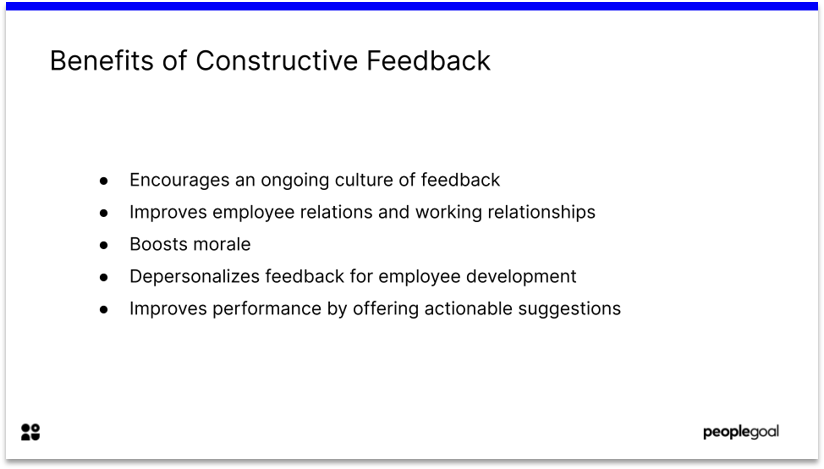
👉 Click here to listen to our webcast discussing the best employee development initiatives
5 Tips for Constructive feedback
Constructive criticism is a skill. Use these tips to master it.
1. Start with a positive
Forbes advises against a ‘compliment sandwich’ – where you put a criticism alongside two warm fuzzy compliments. While this can seem disingenuous, it is important to keep a positive tone.
Start with what is already working well. This helps prevent the employee from catastrophizing about their performance – and makes it clear you are focusing on one area of performance. For a wider view of what’s working well (and what isn’t), using 360 feedback software could be beneficial.
For example, you might thank them for an excellent presentation they gave last week. Then, lead into the feedback from there, ‘While your presentation skills are really excellent, I think you could improve on your engagement during team meetings’.
This places the feedback into context – it’s not a personal attack. Instead, you’re offering something specific and actionable.
2. Focus on behaviors and actions
Keep your feedback grounded in events, actions and behaviors – not personality traits. This makes it clearer for the employee, and depersonalizes negative criticism.
3. Don’t give feedback when frustrated or angry
So many problems arise when we give feedback in a fit of pique! If there is a situation that has upset you, give yourself some space from the individual until you cool off.
When you’re ready, you’ll be much better able to listen to the employee’s perspective and offer helpful, if honest feedback.
4. Pinpoint areas for improvement clearly
Note down the specific behaviors that need changing, and then think of some possible solutions.
Making your intentions clear in writing allows the employee to think more constructively about how they can meet your expectations. Think of some advice that would support your employee to improve.
5. Write goals with employee that addresses their concerns
Following the review, meet with the employee. Give them an opportunity to present their side of the story.
Giving them an opportunity to respond makes feedback less hierarchal. Take on board any misunderstandings. Ask them how they have achieved a goal in the past – and how they might use those strengths to advance this goal.
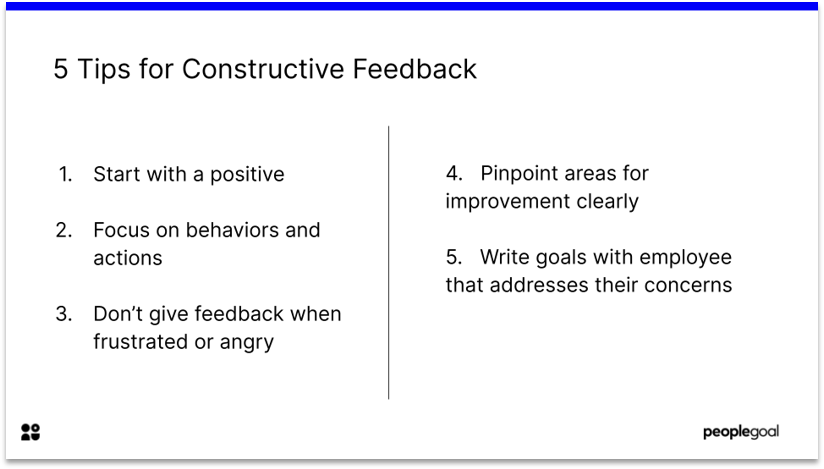
Examples of constructive feedback
Situation #1: Aaron works effectively but caused interpersonal conflict with team members
An example of constructive feedback would be:
‘Your work recently has been excellent. When you work with others, you hold your team to high standards, and this is potentially a great quality in a team player.
However, I’d like to make sure we can bring out the best in this quality. Someone on the team felt overwhelmed by the workload during the team project. They did not feel they could ask you for support, as on a previous instance, you dismissed another co-worker’s request for support.
It’s really important that we build a supportive team. I understand that you hoped to push your team to success, but in my view, the best way to do this is to offer a helping hand. I’m confident you can improve your collaboration skills. A good place to start would be to have an empathetic conversation with your co-workers.
Situation #2: Joe is regularly late for work
An example of constructive feedback:
‘You’ve done a great job recently and many of our customers have complimented your positive attitude.
I’ve noticed that you regularly clocked-in late in May. Arriving on time supports the whole team as we open up for the day. It would also help you to achieve even more. Set a target to arrive on time every day next week.’
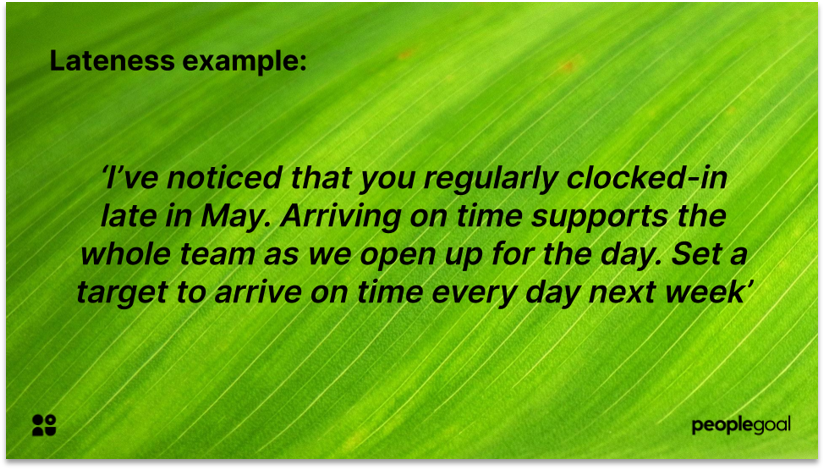
Situation #3: Sasha regularly misses deadlines
An example of constructive feedback:
‘On the current project, you have informed me you are running behind schedule. Thank you for communicating this with me. It would be useful to review your time management strategies to see where you could free up some time’
‘You missed three deadlines this quarter. While I understand that this is a fast-paced environment, this has slowed down team members as we push out our marketing campaign. Your work is consistently excellent. However, might be useful to take a less perfectionist outlook to each task, and prioritize timeliness.’
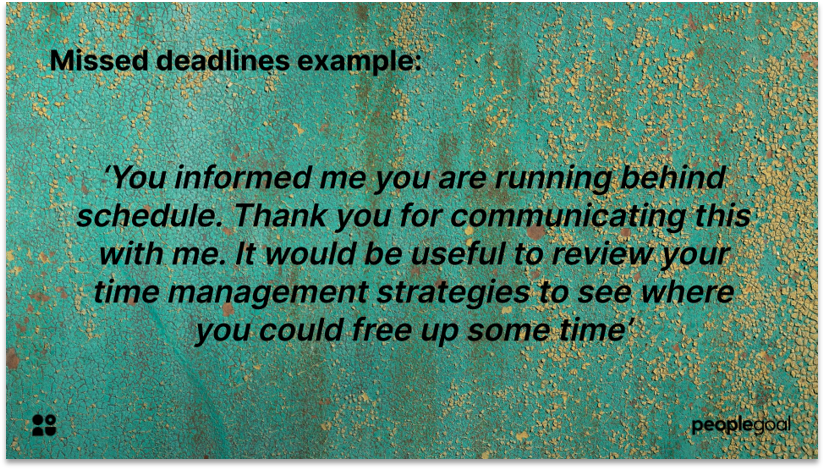
Situation #4: Sebastian lacks attention to detail at times
‘I appreciate your understanding of our wider goals and your grasp of the bigger picture. This helps us keep on track. However, in a recent report you overlooked some small but important details. This held us back from making an informed decision.
To improve on this, I’d suggest we create a checklist of criteria to address in your report. Complete your work in advance so that you can ask me or a colleague to review it.’
Situation #5: Sandy recently missed a professional development goal
‘You set some ambitious goals in the last quarter. While you didn’t meet all of them, I can clearly see the impact of setting stretch goals on your performance. If you’d like to achieve this goal in full, perhaps you could take on fewer tasks to prioritize this.’
‘You set some stretch goals in the last quarter. While it’s important to be ambitious, I can see how this might be demotivating. We should also meet to review these targets and create more actionable goals’
Situation #6: Kiera performs well but lacks communication skills
‘Your recent write up was well-researched and informative. I’ve noticed that you prefer working independently. During team meetings, you sometimes do not offer your point of view.
We would always appreciate your perspective. I wanted to confirm that everything is okay between you and the team. If there are any concerns, you can come to me or HR about this.
In any case, please feel free to voice any thoughts. During team meetings, there are no ‘wrong answers’ – any brainstorming ideas are welcome. You could challenge yourself to make one suggestion each meeting, and go from there. Ensure you make frequent use of communication channels such as Slack, to make things clearer with your team’.
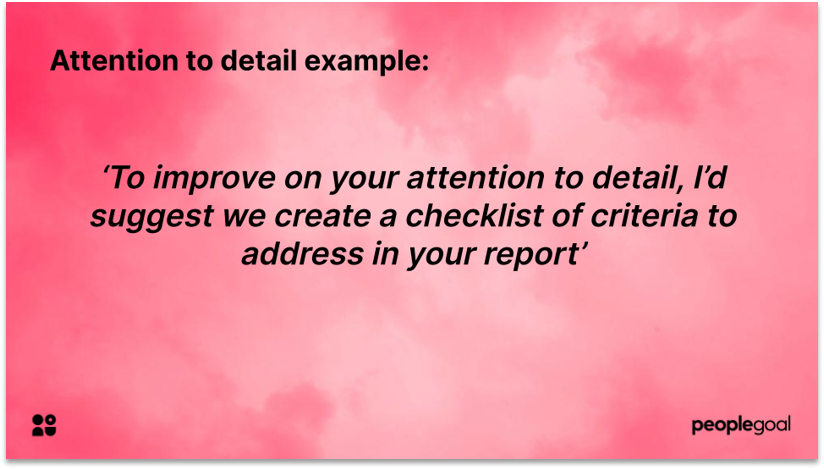
Next steps for constructive feedback
Constructive feedback transforms performance reviews. Gone are the days when employees felt blindsided by appraisals. Instead, constructive criticism equips them with actionable suggestions on how to improve performance.
If you’d like to learn more about constructive feedback, why not read our article Constructive Feedback: 6 Tips to Success.
Ready to 3x Your Teams' Performance?
Use the best performance management software to align goals, track progress, and boost employee engagement.


